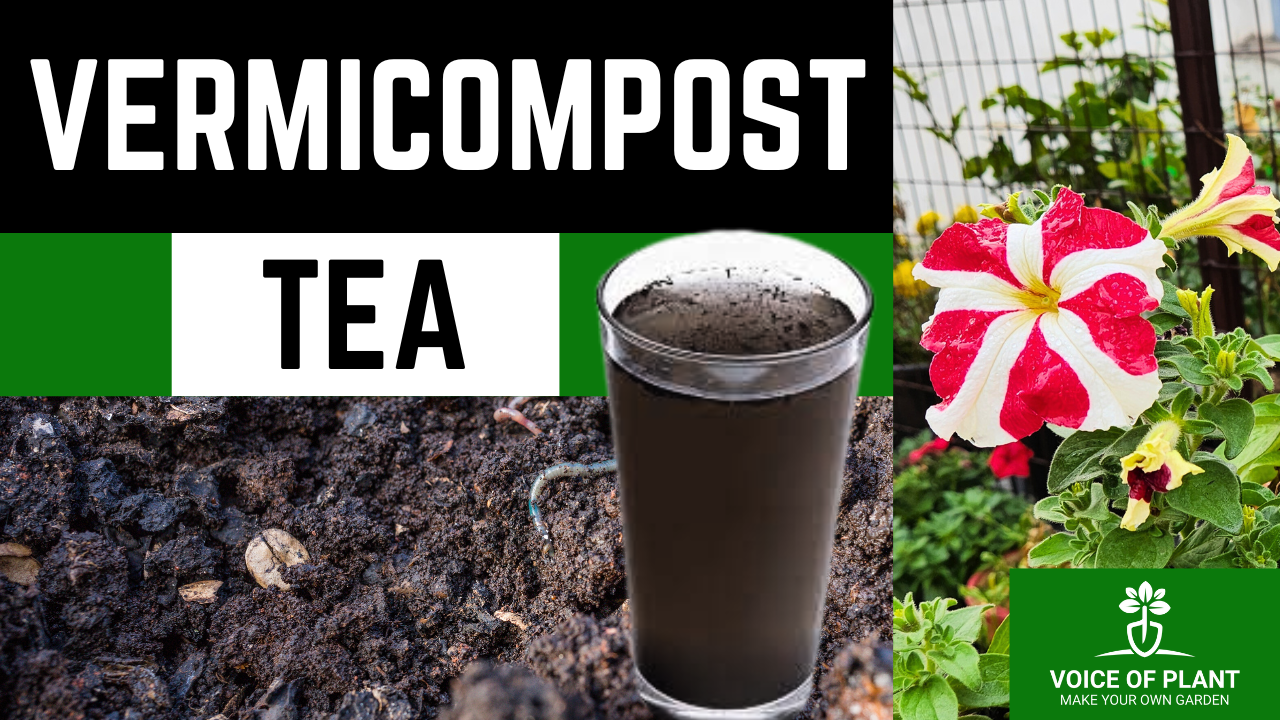Vermicompost is an organic and most powerful compost made up of earthworms. Today, Vermicompost is widely used by many gardeners and farmers in gardening activities.
Vermicompost is also known as earthworm manure. It is a natural process in which earthworms consume the remains of organic matter such as plants and fruit and converts them into nutrient-rich manure in the form of feces. This natural process of composting is beneficial in improving the quality of the soil, making it more suitable for plant growth.
What is ‘tea’ in gardening?
- Any solid manure, when diluted in water to make liquid fertilizer, is commonly known as compost tea in gardening.
- Examples include cow dung manure tea, kitchen manure tea, and vermicompost tea. The methods of making tea from these fertilizers may vary.
How to make Vermicompost tea?
- Take good quality vermicompost in the bucket.
- Add lots of water to the bucket. After some time the manure may expand, so keep extra water so that it dissolves well.
- Cover the bucket with a lid and place it in a cool place, shaded area, away from direct sunlight.
- Water extracts the nutrients of vermicompost when it starts mixing with water.
- Before using the solution (tea), strain it through a cloth or fine mesh to remove any compost particles that may clog your spray bottle.
Important note:
Soaked vermicompost can be used in two ways.
- It can be used after 24 hours of soaking.
- It can also be used after 1 week of soaking.
Both solutions have different benefits and can be used in different ways.
1. Benefits of using Vermicompost tea after 24 hours of soaking
Steps to use it:
- Sieve the solution and dilute the obtained tea with water in a 1:1 ratio.
- Fill the diluted tea in a spray bottle for multipurpose use.
You can use this diluted vermicompost tea in the following ways:
- Spray it on small seedlings and the leaves of plants.
- Use it as a mild nourishing tonic for cuttings.
- Apply it to plants during times of stress, such as after pruning, repotting, or when propagating new plants.
Vermicompost tea is a quick and effective fertilizer that can be made in 24 hours.
- It can be sprayed on plants every 15 days in the evening.
- This treatment promotes healthy growth and makes leaves shiny.
2. Benefits of using Vermicompost tea after 1 week of soaking
If compost is soaked for 1 week in water, it will result in a more concentrated, dark-colored solution. While soaking vermicompost in water, it is important to stir the solution occasionally to ensure proper mixing of the compost with water.
- Strong fertilizer: Vermicompost tea obtained by this method is indeed a strong fertilizer due to its higher concentration.
Steps to use it:
- Take this tea (there’s no need to sieve it at this point) and dilute it with water at a ratio of 1 part tea to 4 parts water.
- Give this diluted tea to your plants gradually until it starts to flow out from the bottom hole of the container.
- The compost residue left after separating the tea can be incorporated into the soil as a soil conditioner.
Vermicompost tea can be applied to all types of plants
This vermicompost tea is enriched with nutrients and can be given to all types of plants, including indoor and outdoor plants, flowering and non-flowering plants, and succulents.
a) For indoor plants – when using only vermicompost tea, apply it once every 45 to 60 days.
b) For outdoor plants – when using only vermicompost tea, apply it every 20 to 25 days.
Note:
- Ensure that no other fertilizer is applied to the plants for 10 days both before and after using vermicompost tea.
Why is Vermicompost Tea recommended instead of solid form?
Vermicompost tea is often recommended over vermicompost (solid form) for many reasons:
1. Vermicompost (s0lid form) cannot be used as a spray for plants.
2. For small seedlings, a liquid tonic is recommended. A liquid form of nutrition is suitable for small seedlings.
3. Additionally, for cuttings and Lecca balls, vermicompost (solid form) cannot be added directly. It is preferable to use liquid tea filled in a spray bottle.
4. Some plants require regular nutrition every 15-20 days for optimal growth. Adding vermicompost (solid form) again and again every 15 days may disrupt soil structure. Therefore vermicompost tea is a more suitable option.
5. A small amount of compost can produce significant amounts of tea, which can effectively nourish all plants. In contrast, solid manure, if available in limited quantities, may not be sufficient for all plants.
6. When adding fertilizer or manure to plants, it is also important to water the soil. This helps the soil absorb nutrients from the compost, which is a slower process than providing a nutrient-rich tonic (like compost tea) directly.
At last:
- Liquid tonics significantly enhance plant growth, and vermicompost tea is particularly effective when used as a nutrient source for plants.
Also read:
1. Benefits of Seaweed Fertilizer
2. How to make Cow Dung Fertilizer
Happy Gardening !!!
